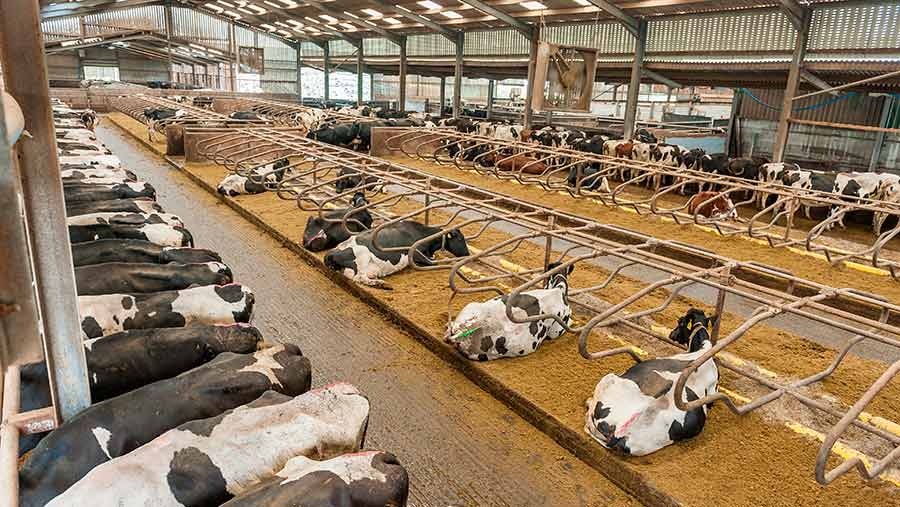5 ways to cut costs on your dairy by making marginal gains
 © Robert Smith
© Robert Smith Dairy farmers are under immense pressure right now – but little improvements can quickly add up to big savings, as visitors to the RABDF NMR Gold Cup open day discovered.
Speaking at Neil Baker’s Rushywood Farm, Crewkerne, Somerset, consultant Graeme Smith from Precision Nutrition said there were five main steps to boosting efficiencies:
1. Attention to detail such as:
- Clean water – get rid of big troughs and fit easy-to-clean replacements.
- Push up silage more frequently and manage your clamp better to reduce wastage and drive feed intakes. Clean your mixer wagon monthly too.
- Check feed barriers aren’t acting as a barrier to intakes – move the bar if necessary.
- Cows should lie down within a minute of going to a cubicle – if they don’t check its size and bedding is correct. Move bars if necessary. Comfortable cows milk better.
See also: Cubicle design – an indepth look at cow comfort
2. Prevention is better than cure. Boost the cows’ immunity and reduce mastitis cases.
3. Pregnancies pay. A 1% improvement in pregnancy rate is worth £25-£30 a cow. Transition management is key.
4. What does good look like? If you don’t measure it you can’t manage it.
5. Be like a marine. When under fire, take action.
“Excellence is the aggregation of marginal gain,” says Mr Smith. “You might not notice the difference tomorrow but gradually you’ll start to see small improvements.”
For example, a 1% improvement in milk yield and quality, feed rate and cost, pregnancy and replacement rates, combined with one less case of mastitis and lameness, one fewer casualty cow and a month’s reduction in heifer calving age all tot up to £123.69 a cow a year. “On a 200-cow herd that’s £24,738.”
